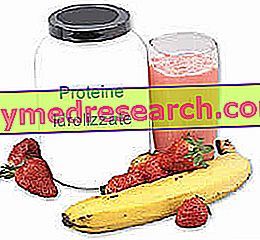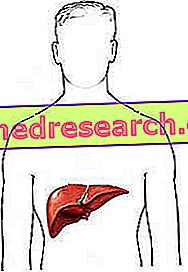Hydrolyzed proteins are a mixture of more or less complex amino acids and peptides obtained from the hydrolysis of an animal protein source (eg whey protein, egg protein) or vegetable (eg soy protein).
The hydrolysis process follows what happens in the stomach and in the human intestine, where specific enzymes - pepsin, trypsin, protease, peptidase - break down the dietary proteins into smaller and smaller peptides, until the single amino acids that compose them are obtained.
- Two amino acid molecules form a dipeptide, three a tripeptide and so on.
- If the peptide contains less than ten amino acids it is called oligopeptide
- As an indication, we speak of a polypeptide when this chain is made up of less than 100 amino acids, and of proteins when the number of individual amino acid units exceeds this threshold.

PLEASE NOTE: the intestine is able to absorb even small peptides (di-, tri- and oligo-peptides), which seem to be even more easily absorbed than free amino acids.
Hydrolyzed proteins are also known as predigested proteins. Although the hydrolysis process can take place in various ways (for example by providing heat, or strongly acidic or basic substances), the hydrolysed proteins destined for sports integration and clinical applications are obtained by enzymatic hydrolysis; this allows to preserve some important components that would be inactivated by acids or heat, and to improve the taste.
In particular, there are two main fields of application of hydrolysed proteins:
- the formulation of hypoallergenic products, such as formulas intended for infants allergic or intolerant to milk proteins
- the formulation of protein supplements for athletes, which compared to traditional protein powder supplements have two main advantages:
- they are better tolerated at the gastro-intestinal level, especially by the most sensitive subjects who complain of swelling, flatulence and abdominal pain following the integration of traditional powdered products
- theoretically, they require shorter digestion times, ensuring a faster absorption after ingestion which results in a greater insulin peak (greater insulinotropic effect, see insulin index) and in a more rapid increase in the levels of amino acids in the blood; consequently, hydrolysed protein supplements are particularly indicated in the post-workout to accelerate recovery and exploit the so-called anabolic window. By increasing the release of insulin, hydrolyzed proteins taken together with an adequate dose of liquids and carbohydrates increase the speed of recovery of muscle glycogen after exercise. A study 1 that compared some metabolic effects of whey proteins isolated with hydrolysed whey proteins showed that:
- the speed of gastric emptying is almost identical
- the insulin peak is later after the ingestion of the hydrolysed proteins (60 minutes against 40 of the traditional isolated proteins)
- the insulin peak determined by the hydrolysed proteins is however more intense (28%) and consistent (area under the curve over three hours 42% higher)
PLEASE NOTE: the more the hydrolysis process is pushed and the greater the bitterness problems of the product become, since some amino acids (such as tryptophan, phenylalanine, tyrosine and leucine) have a typically bitter taste. A known raw material of hydrolysed proteins (Carbery Optipep TM) declares a degree of hydrolysis (DH) ranging from 5 to 40%.



